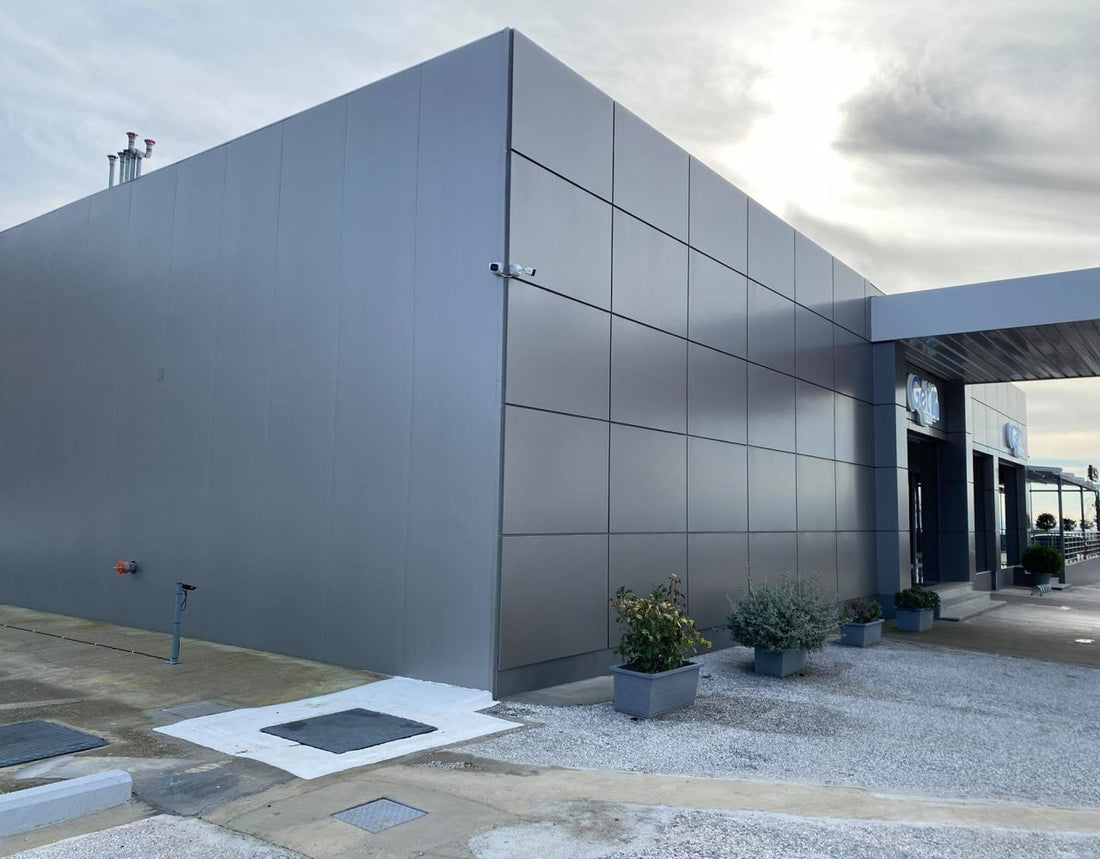
The application of one material over another, essentially providing a skin, to the exterior of a home is called siding. This not only provides buildings with extra insulation, but also additional weather resistance and an improved appearance. You can use a variety of materials for siding, but the most popular include wood, metal, vinyl, and a wide variety of composite materials.
Best flooring materials
- Composite Panels
Composite panels are most commonly used in commercial buildings, but that doesn't mean you can't use them in residential buildings as well. These panels can be installed quickly, which helps keep costs low. This is one of the best materials for acoustics and offers excellent air and water tightness. You will also love the fire resistance of this material.
- Rain Screen Panels
This is one of the more unique cladding materials and is typically attached to a support structure which is then attached to the building. Rainscreen panels are weather resistant, create ventilation and reduce condensation within the cavity. There is also less risk of cold bridges forming when this material is used.
- Built Systems
Integrated systems are made from pre-finished steel or aluminum and are available in a variety of colors. Acoustic and thermal performance can be adjusted to suit your needs. There are numerous firewall options available with this material.
- Cement
Cement is highly resistant to damage and weathering, as well as not being affected by atmospheric pollutants. Mold and fungi cannot grow on concrete as they can on other materials and it is frost-proof and requires little maintenance. Concrete is available in a variety of colors, is lightweight, easy to cut, and can be color matched to suit your needs.
When siding can be installed
Many people know what type of cladding they want to use on the exterior of their building before they even finish the design process of the building itself. However, the rest of the building must be constructed before the cladding can be laid.
Therefore, the external walls will have to be framed with wooden or steel beams. The walls would then be covered with plywood or another type of board to help the structure resist high winds. The plates will not be necessary in buildings constructed of concrete or masonry, as these structures are much more resistant and can already withstand strong winds.
Once everything is complete, the cladding can easily be placed on the exterior of the building. Although there are many different materials that can be used for siding, they are all installed using similar techniques.
How to install siding
- Planks or tiles
Planks or tiles made from vinyl, wood, aluminum or fiber cement are always nailed to the exterior of a building. The lines are overlapping, making it necessary to start at the bottom of the structure and continue until reaching the top. For this coating, a blind nailing technique is used, which means that the nails are all covered by the material from the row above. The coating is done this way so that the nails are not exposed to the elements, which prolongs their useful life as they are less likely to rust or corrode.
- Masonry and Concrete
Buildings made of masonry and concrete use a curtain wall system for cladding. The curtain wall supports and does not touch the exterior of the building. This intermediate space allows air to circulate between the cladding and the building. The air prevents the accumulation of moisture, as the moisture will go to the bottom of the structure and exit through the channels you place. The most commonly used materials for masonry cladding are brick or natural stone. The most used natural stone is slate; however, sandstone and marble are also excellent options.
- Metal
Metal siding is fireproof, so more people are choosing to use it in their siding. This material is easy to install. When installing or installing it, you will need to start from the bottom and work your way to the top. Fortunately, this material is low maintenance, so you'll never need to do much with it once it's placed in your building. There is one disadvantage of metal: it can be easily dented if something hits it.
Fire resistance
The type of material you use for your siding will determine whether or not it is fire resistant. The worst covering when it comes to fires is wooden boards and plywood. Aluminum and reconstituted wood products have slightly better strength, but not as much as boards or planks made from fiber cement or steel. The best coating, when it comes to fire resistance, is brick, as it withstands heat and does not catch fire.
Benefits of coating
While cladding makes your buildings look amazing, there are many other benefits to having it installed. Some of the benefits you'll love most include:
- Increased building life expectancy
- Increase in building value
- Eliminates internal problems
- Protects from water
- Improves air tightness
- Improved external appearance
- Lower maintenance costs
- Lower energy costs
You may not have thought about siding in the past, especially if you had never heard of it before or didn't know how many benefits came from installing it. However, now that you are well versed in this topic, you may want to consider it for any of your future buildings.
If you're in the construction industry, you should start using cladding on the buildings you build, and if you're a homeowner, you should talk to your contractor about it when you build your next building.
The difference this makes to each building will be worth the extra expense, especially if it means you won't need to replace the building or make repairs to it anytime soon.

